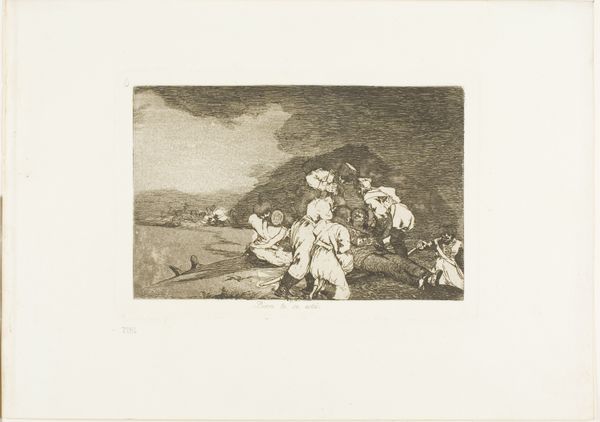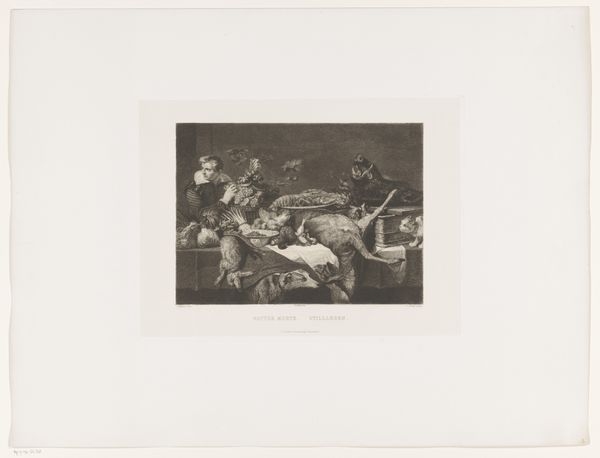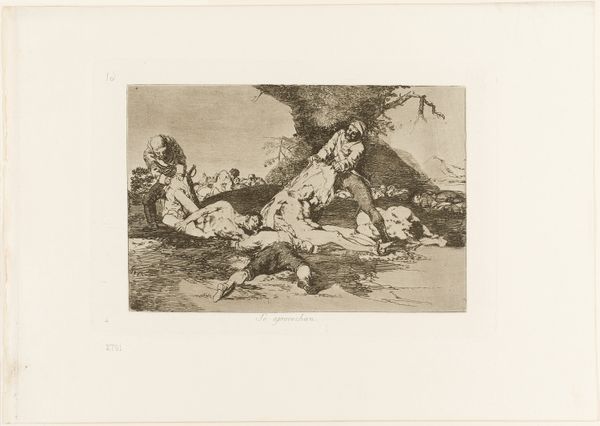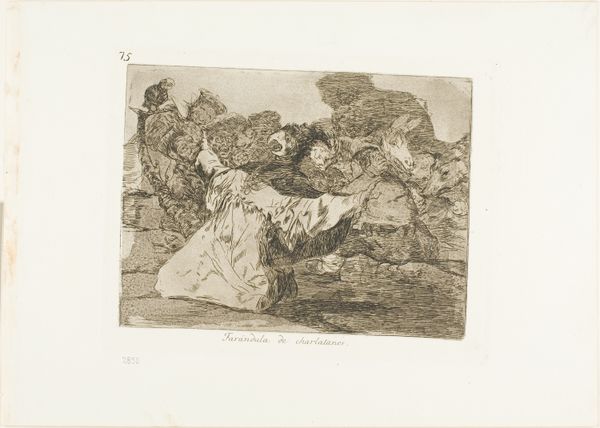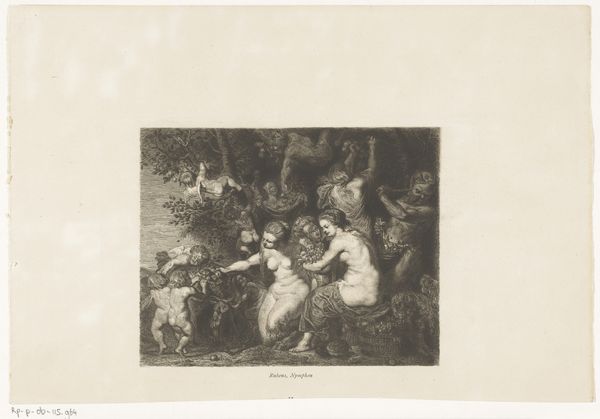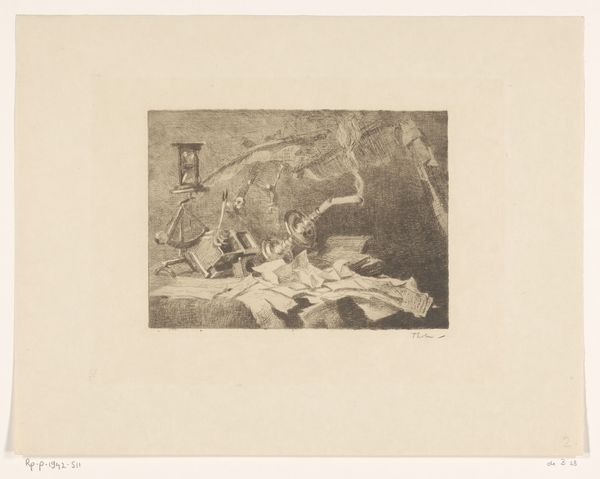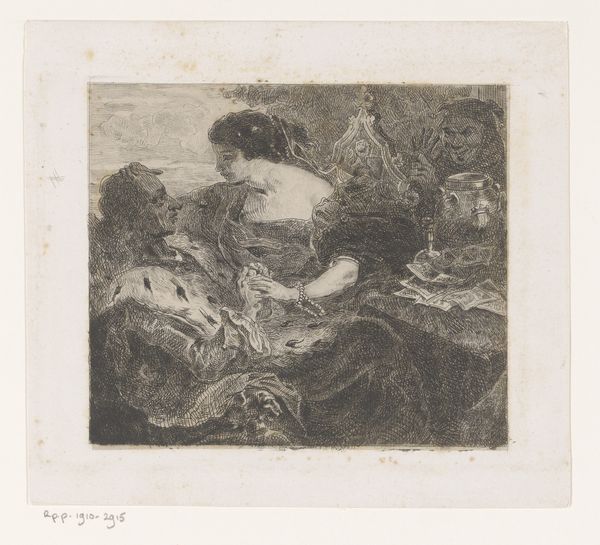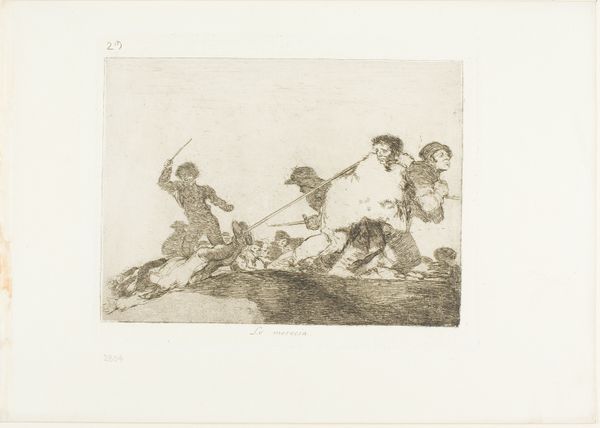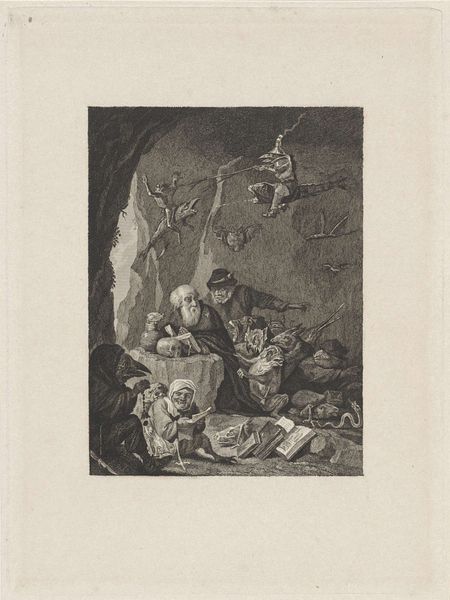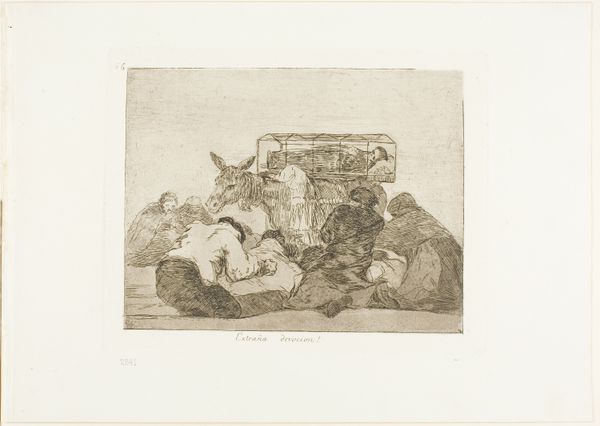
They Do Not Agree, plate 17 from The Disasters of War Possibly 1810 - 1863
0:00
0:00
drawing, print, etching, paper
#
drawing
#
narrative-art
# print
#
etching
#
war
#
landscape
#
figuration
#
paper
#
romanticism
#
history-painting
Dimensions: 128 × 194.5 mm (image); 145 × 216 mm (plate); 240 × 335 mm (sheet)
Copyright: Public Domain
Curator: Francisco de Goya's print, "They Do Not Agree," from his series *The Disasters of War,* presents a stark scene of conflict rendered in etching. It was likely created between 1810 and 1863, and we’re fortunate to have a print here at the Art Institute of Chicago. Editor: It strikes me immediately with its brutal, unflinching depiction. The contrast of light and shadow intensifies the chaos and despair. Compositionally, the dynamic arrangement draws your eye through the scene. Curator: The power lies in the etching process itself. Think of the labor—the meticulous carving into the metal plate. Goya’s innovative use of aquatint created those textured areas, almost like washes. These techniques weren’t just aesthetic choices, they were a way to mass-produce these images, making them accessible for wider consumption as a commentary on political violence. Editor: I agree that the process is important. I also see the expert manipulation of line and form contributes heavily to the emotional weight. The foregrounded figure on horseback points an accusatory finger, which then creates a line of sight to the scene's horror. Curator: Absolutely, Goya held immense power. He produced damning critiques on colonialism. It is not an overstatement to say that his commentary implicates all those complicit in this violence and the dehumanization of these wars. Editor: Indeed. And he compels us to reflect on this devastation by positioning our vantage point into the violence, which encourages engagement and forces uncomfortable acknowledgement. I will surely continue reflecting on how war reshapes physical spaces as much as human minds. Curator: Considering how he distributed them really opens this up for me and shows me this artwork's significance, considering our history of warfare. It continues to act as an artistic condemnation of its kind.
Comments
No comments
Be the first to comment and join the conversation on the ultimate creative platform.
